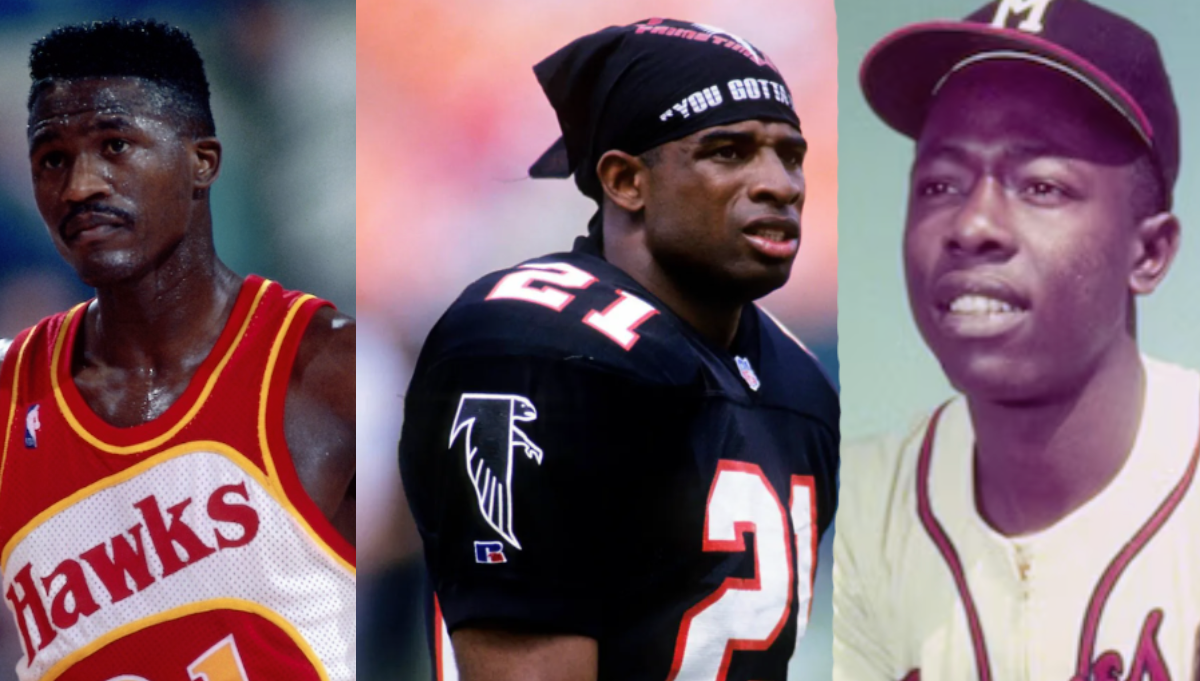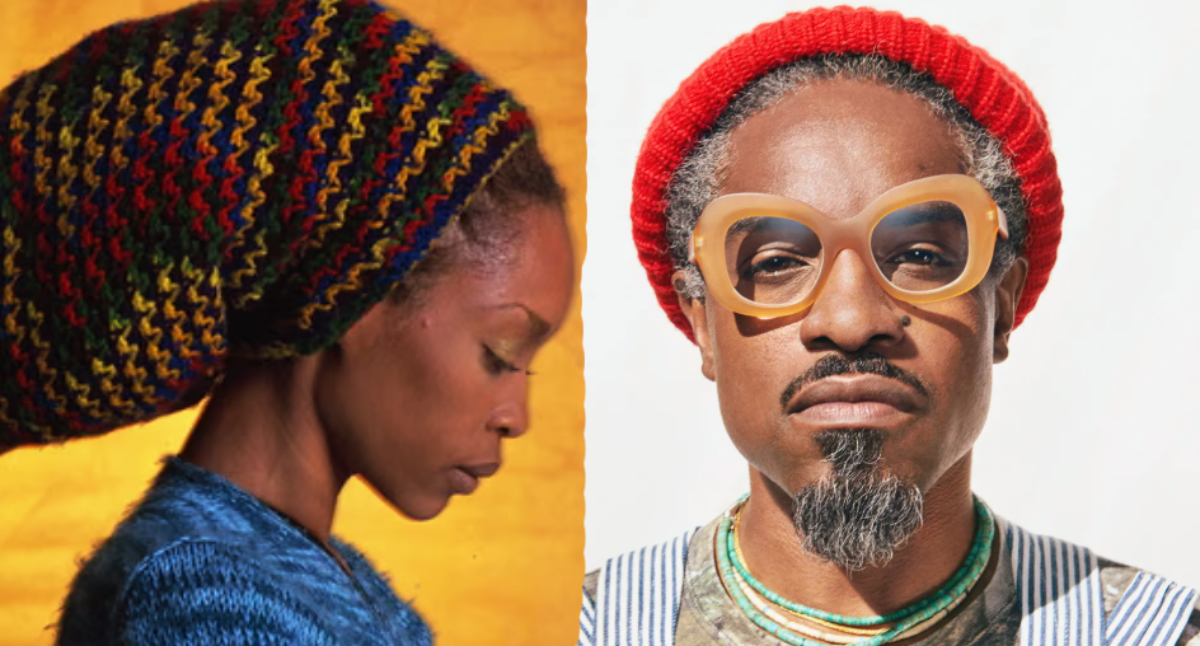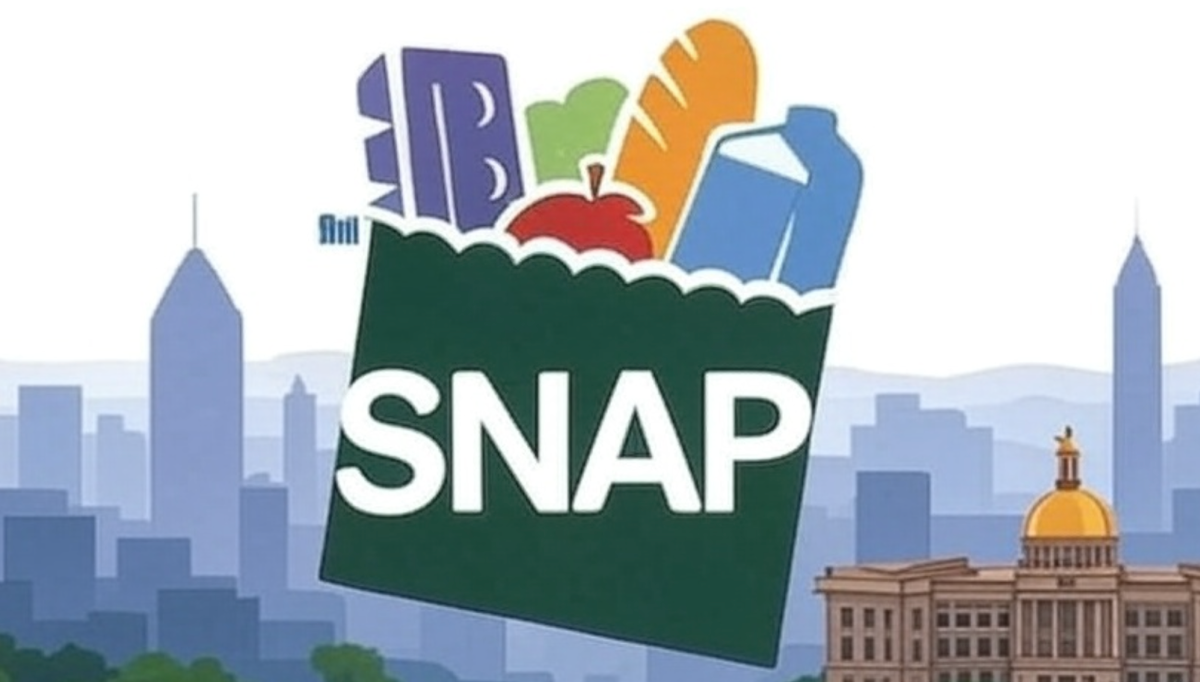-
Development / LIfestyle4 Min Read
As a sudden cold snap grips metro Atlanta, with temperatures dipping into the low 20s and frost warnings blanketing the region from Cobb County to DeKalb, our beloved houseplants are facing an unexpected chill.
While we’re no strangers to Georgia’s fickle weather—after all, just last week we were basking in highs near 70— this December freeze serves as a stark reminder that winter is here.
How To Protect Your House Plants From the Cold
For Atlanta gardeners who double as indoor jungle enthusiasts, now’s the time to act fast to shield your leafy companions from the drop.
At AtlantaFi.com, where we champion everything from community tree plantings along the BeltLine to vibrant flower beds in Grant Park, we know indoor plants play a vital role in our urban oasis.
They purify the air in our high-rises and provide a touch of nature amid the concrete. But cold air seeping through windows and drafts from HVAC systems can stress even the hardiest ficus or pothos, leading to yellowing leaves, droopy stems, or worse—root rot from overcompensation with heat.
Here’s our expert guide to keeping your houseplants thriving through this frosty spell, drawn from local horticulturists at the State Botanical Garden of Georgia and the Atlanta Botanical Garden.
1. Relocate Away from the Cold Fronts
Your windowsills might offer prime sunlight during milder months, but they’re enemy territory right now. Cold glass can create “radiational cooling,” dropping temps by up to 10 degrees near the panes.
- Pro Tip: Move plants at least 2-3 feet away from untreated windows, especially north- or east-facing ones. In high-rises like those in Midtown, cluster them near interior walls or in warmer rooms like the kitchen.
- Local Note: If you’re in a drafty Craftsman bungalow in Inman Park, seal gaps with weatherstripping—it’s a quick win for both plants and your energy bill.
2. Maintain Steady Humidity and Watering
Atlanta’s indoor heating cranks up during snaps like this, sucking moisture from the air and your plants’ leaves. Aim for 40-60% humidity to mimic their tropical origins.
- Pro Tip: Group plants together on a tray filled with pebbles and water (keep pots elevated to avoid soggy roots). A quick misting with room-temperature water in the morning helps, but skip it at night to prevent fungal issues.
- Water Wisely: Let the top inch of soil dry out before watering—cold soil holds moisture longer, risking root rot. Use lukewarm water to avoid shocking roots. For succulents like your jade plant, ease up even more; they’re drought-tolerant champs.
3. Boost Warmth Without the Burn
No one wants crispy edges from a too-hot radiator, but a little gentle warmth goes a long way.
- Pro Tip: Place a space heater on low in the room (keep it 3 feet away from foliage), or use a plant lamp with a warm bulb for indirect light. Avoid direct blasts from vents—opt for a fan on low to circulate air evenly.
- Eco Twist: Atlanta’s sustainability crowd will love this: Drape a lightweight blanket over larger pots at night for insulation, reducing reliance on fossil-fuel heat.
4. Monitor for Stress Signals and Pests
This cold can weaken defenses, inviting spider mites or scale that love dry, chilly conditions.
- Pro Tip: Inspect undersides of leaves daily. Wipe with a damp cloth and neem oil solution if you spot trouble. Yellowing? It might be chill stress—prune affected leaves to redirect energy.
- When to Call in Pros: If your peace lily (a humidity hog) starts wilting despite TLC, head to Pike Nurseries in East Cobb for a check-up. They’re running a “Winter Prep Workshop” this weekend.
As we hunker down through this snap—expected to lift by Wednesday with highs rebounding to the 50s—remember that resilient indoor greenery sets the stage for spring’s outdoor planting frenzy. Whether you’re prepping for dogwoods in Piedmont Park or wildflowers along the Chattahoochee, healthy houseplants are your best practice run.
Final Word
Stay warm, Atlanta, and keep those greens growing. Got a plant survival story from this freeze? Share it in the comments below—we’re all in this frosty garden together.
AtlantaFi.com is your go-to source for sustainable agriculture news, from urban farming initiatives to tree-planting drives across the Peach State.
More from AtlantaFi.com:
-
As we wrap up 2025 and gear up for a fresh start in the new year, many Atlanta homeowners are already planning their spring cleanouts, home renovations, and yard overhauls.
One essential service that helps keep our neighborhoods tidy is the City of Atlanta’s bulk trash pickup program, managed by the Department of Public Works Office of Solid Waste Services (SWS).
For 2026, the process remains straightforward and resident-friendly, offering up to 12 free scheduled collections per year for single-family homes.
Whether you’re ditching an old sofa or hauling away storm debris, here’s everything you need to know to stay on schedule and avoid common pitfalls.
How Bulk Trash Pickup Works in Atlanta
Unlike regular weekly garbage and recycling routes, bulk trash collection isn’t tied to a fixed calendar day—it’s an on-demand service that residents must schedule in advance. This flexibility allows you to plan around your needs, but it also means proactive booking is key.
- Scheduling Your Pickup: Residents can request a bulk collection at least one business day ahead of their desired date. Use the official SWS Collection Tool online or call ATL311 at (404) 546-0311 (or dial 311 from within city limits). atlantaga.gov The tool not only lets you book but also helps identify your regular trash and recycling days based on your address.
- Placement Rules: Once scheduled, place your bulk items at the curb by 7 p.m. the night before your pickup day. Items should be neatly piled and accessible, but keep them at least 3 feet from any carts or vehicles to ensure safe collection.
- Frequency Limit: Single-family households qualify for 12 free bulk pickups annually. Overages may incur fees, so track your requests through the ATL311 app or website. Multi-family properties or businesses have separate commercial guidelines—check with SWS for details.
For the most up-to-date availability, visit the Office of Solid Waste Services page.
What Qualifies as Bulk Trash?
Bulk items are defined as anything too large, heavy, or voluminous for standard garbage trucks. Common examples include:
- Furniture (sofas, mattresses, tables)
- Appliances (refrigerators, washers—freon-containing units must have certification tags)
- Large yard waste piles (over 20 bags of leaves or trimmings count as bulk)
- Construction debris like wooden playground sets or metal scraps
- Electronics (TVs, computers—e-waste recycling encouraged)
Pro Tip: Not everything goes in bulk. Tires, hazardous materials (paint, chemicals), and medical waste require special drop-off or services. For a full list, refer to the SWS guidelines.
Holiday Impacts on 2026 Collections
Holidays can shift your regular trash, recycling, and bulk schedules, but bulk pickups—being scheduled—may need rescheduling if they fall on a delayed day.
While the official 2026 holiday schedule hasn’t been released yet (as of December 2025), it’s expected to mirror 2025’s pattern: most federal holidays trigger a one-day delay for collections, with exceptions for Presidents’ Day, Indigenous Peoples’ Day, and Veterans’ Day, which follow normal routes.
Key 2026 dates to watch:
- Martin Luther King Jr. Day: Monday, January 19 (likely one-day delay)
- Presidents’ Day: Monday, February 15 (regular schedule)
- Memorial Day: Monday, May 25 (one-day delay)
- Juneteenth: Thursday, June 19 (one-day delay)
- Independence Day: Friday, July 3 (observed; one-day delay)
- Labor Day: Monday, September 7 (one-day delay)
- Indigenous Peoples’ Day: Monday, October 12 (regular)
- Veterans Day: Tuesday, November 11 (regular)
- Thanksgiving: Thursday, November 26 (one-day delay)
- Christmas: Thursday, December 25 (one-day delay)
Stay tuned to the SWS Holiday Schedule page for the official 2026 update, typically posted in late fall.
atlantaga.gov In the meantime, the 2025 schedule provides a reliable preview.Tips for a Smooth 2026 Cleanup
- Download the App: The free ATL311 app (available on iOS and Android) sends reminders, tracks requests, and reports issues like missed pickups.
- Eco-Friendly Alternatives: For large hauls, consider the city’s free drop-off events or partner with local recyclers to reduce landfill waste.
- Report Problems: If your bulk pickup is missed, log it via ATL311 within 24 hours.
Atlanta’s bulk trash program is a vital tool for maintaining our city’s cleanliness and sustainability goals. By scheduling early and following guidelines, residents can keep 2026 off to a clutter-free start.
For personalized assistance, head to the SWS Collection Tool today.
Final Word
As the city lights up with yet another special event this weekend, remember: Safe driving is the real treat. For more tips on navigating safely around the city, read our Atlanta Traffic Guide.
More from AtlantaFi.com:
-
Go to any Atlanta barber shop and you’ll eventually find a heated discussion of who the GOAT (Greatest of All Time) is in sports circles, but when we confine that discussion to Atlanta, it gets interested.
Now, it’s easy to talk favorites, but this is not about that. This list is essentially who has made a larger impact on Atlanta’s culture in their particular sport and even transcended it?
Who Is Atlanta’s Sports GOAT?
These selections are informed by accolades, statistical dominance, and cultural significance, as reflected in various rankings and discussions.
Note that “greatest” is subjective, blending on-field performance with broader impact. Here, they are presented in no particular order:
1. Hank Aaron
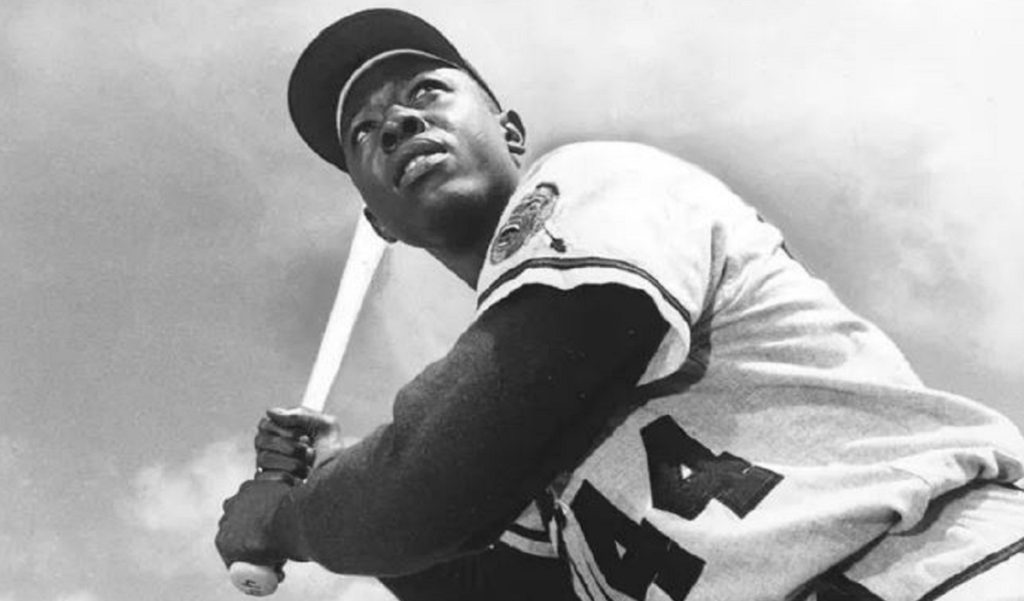
- Sport: Baseball
- Teams: Atlanta Braves (1966–1974, after moving from Milwaukee; returned to Milwaukee 1975–1976)
- Sports Records:
- Career MLB stats: 755 home runs (second all-time, held record from 1974 to 2007), 2,297 RBIs (most all-time), 6,856 total bases (most all-time), 3,771 hits (third all-time).
- With the Braves: 21 of 23 seasons, leading in most offensive categories for the franchise, including home runs (733 with Braves), RBIs, total bases, and hits.
- 25-time All-Star, 1957 NL MVP, 1957 World Series champion, 3-time Gold Glove winner, 2-time NL batting champion, 4-time NL home run leader, 4-time NL RBI leader.
- Impact:
- Broke Babe Ruth’s hallowed 714 home run record on April 8, 1974, in Atlanta, a defining moment in sports history.
- Faced intense racism and death threats while chasing the record, showcasing resilience and courage, advancing the visibility of Black athletes post-Jackie Robinson.
- Defined Atlanta sports for decades, becoming the city’s most beloved athlete and a symbol of perseverance.
- Why He’s Great:
- Aaron’s statistical dominance, longevity (21 years with the Braves), and the cultural significance of breaking the home run record amid adversity make him a cornerstone of Atlanta’s sports identity. His legacy transcends stats, inspiring generations and cementing Atlanta as a baseball hub.
Here’s what many believe to be the most pivotal moment in Atlanta sports history:
2. Deion Sanders

- Sport: Football (and Baseball)
- Teams:
- Football: Atlanta Falcons (1989–1993)
- Baseball: Atlanta Braves (1991–1994, part of multiple stints with various teams)
- Sports Records:
- NFL Career Stats: 53 interceptions, 1,331 return yards, 9 defensive touchdowns (6 from interceptions, 3 from fumbles), 60 punt returns for 792 yards and 3 TDs, 155 kickoff returns for 3,523 yards and 3 TDs.
- With the Falcons: 5 seasons, 24 interceptions, 3 interception return TDs, 1 punt return TD, All-Pro selection in 1992 and 1993, Pro Bowl selection in 1991, 1992, and 1993.
- MLB Career Stats: .263 batting average, 39 home runs, 186 stolen bases, 558 hits over 9 seasons.
- With the Braves: 4 seasons, .304 batting average in 1992 (best year), 14 triples (led NL in 1992), 26 stolen bases in 1992, played in 1992 World Series.
- First athlete to play in both a Super Bowl (1995 with San Francisco 49ers) and a World Series (1992 with Braves).
- Impact:
- Nicknamed “Prime Time,” Sanders brought unparalleled flair, confidence, and versatility to Atlanta, redefining the cornerback position with elite coverage skills and game-changing return ability.
- With the Falcons, his electrifying play—interceptions, returns, and highlight-reel moments—boosted the team’s visibility and energized fans during a challenging era for the franchise.
- In baseball, contributed to the Braves’ 1992 NL pennant run, showcasing rare two-sport prowess, including playing a Braves game and a Falcons game in the same day (October 11, 1992).
- His larger-than-life persona, flashy style, and swagger made him a cultural icon, elevating Atlanta’s profile as a sports city.
- Why He’s Great:
- Sanders’ unique dual-sport excellence, with significant contributions to both the Falcons and Braves, sets him apart. His lockdown defense (opponents avoided throwing his way) and explosive return game revolutionized football, earning him a 2011 Pro Football Hall of Fame induction. For Atlanta, he brought excitement, star power, and versatility, leaving a lasting mark on both franchises and the city’s sports identity during the early 1990s.
3. Dominique Wilkins

- Sport: Basketball
- Team: Atlanta Hawks (1982–1994)
- Sports Records:
- Career NBA stats: 24,668 points, 7,169 rebounds, 26.4 points per game average.
- With the Hawks: 12 seasons, franchise leader in points scored (23,292), 9-time All-Star, 7-time All-NBA selection, 1986 NBA scoring champion (30.3 PPG).
- 2-time NBA Slam Dunk Contest champion (1985, 1990), known for legendary duels with Michael Jordan.
- Impact:
- Nicknamed “The Human Highlight Film,” Wilkins brought excitement to Atlanta with his electrifying dunks and scoring prowess, making the Hawks a draw in the 1980s and early 1990s.
- Led the league in scoring in 1986, one of only eight players to average 25+ points per game for 10 consecutive seasons.
- Elevated Atlanta’s basketball profile during a time when the city craved sports heroes, despite no championship.
- Why He’s Great:
- Wilkins’ athleticism, scoring consistency, and charisma made him the greatest Hawk in franchise history. His influence on the game’s style and Atlanta’s sports culture, combined with sustained excellence, earns him a top spot.
4. Michael Vick

- Sport: Football
- Team: Atlanta Falcons (2001–2006)
- Sports Records:
- Career NFL stats: 6,109 rushing yards (most by a QB at retirement), 22,464 passing yards, 133 passing TDs, 36 rushing TDs.
- With the Falcons: 6 seasons, 4,602 rushing yards (franchise record for QBs), 11,505 passing yards, 71 passing TDs, 3 Pro Bowl selections.
- First QB to rush for 1,000 yards in a season (1,039 in 2006), set NFL record for career rushing yards by a QB.
- Impact:
- Revolutionized the quarterback position with his dual-threat style, blending elite passing and unprecedented running ability, influencing modern NFL play.
- Led the Falcons to the 2004 NFC Championship Game, energizing Atlanta fans and putting the franchise on the map.
- Despite off-field controversy (dog fighting conviction in 2007), his on-field dynamism made him a cultural phenomenon in Atlanta.
- Why He’s Great:
- Vick’s transformative play redefined football, bringing excitement and hope to the Falcons. His record-breaking athleticism and ability to single-handedly change games make him one of Atlanta’s most impactful athletes.
Who good was Vick? Watch this:
============================================================
5. Chipper Jones

- Sport: Baseball
- Team: Atlanta Braves (1993–2012)
- Sports Records:
- Career MLB stats: .303 batting average, 468 home runs, 1,623 RBIs, 2,726 hits, 85.3 WAR (Wins Above Replacement, third among Braves).
- With the Braves: 19 seasons, top 3 in franchise history for WAR, slugging percentage, on-base percentage, home runs, total bases, hits, runs scored, and RBIs.
- 1995 World Series champion, 1999 NL MVP, 8-time All-Star, 2-time Silver Slugger, 2008 NL batting champion (.364).
- Impact:
- A homegrown talent, drafted first overall in 1990, Jones spent his entire career with the Braves, a rarity in modern sports, embodying loyalty and leadership.
- Key part of the Braves’ 1990s dynasty, including the 1995 World Series win, Atlanta’s only major four-sport championship.
- Respected for skill, grit, and taking a pay cut to help the team, enhancing roster strength.
- Why He’s Great:
- Jones’ consistency, versatility (switch-hitter, third baseman), and clutch performances in a golden era of Braves baseball mark him as one of the greatest. His Hall of Fame induction (2018) and deep ties to Atlanta solidify his legacy as a franchise icon.
Evander Holyfield
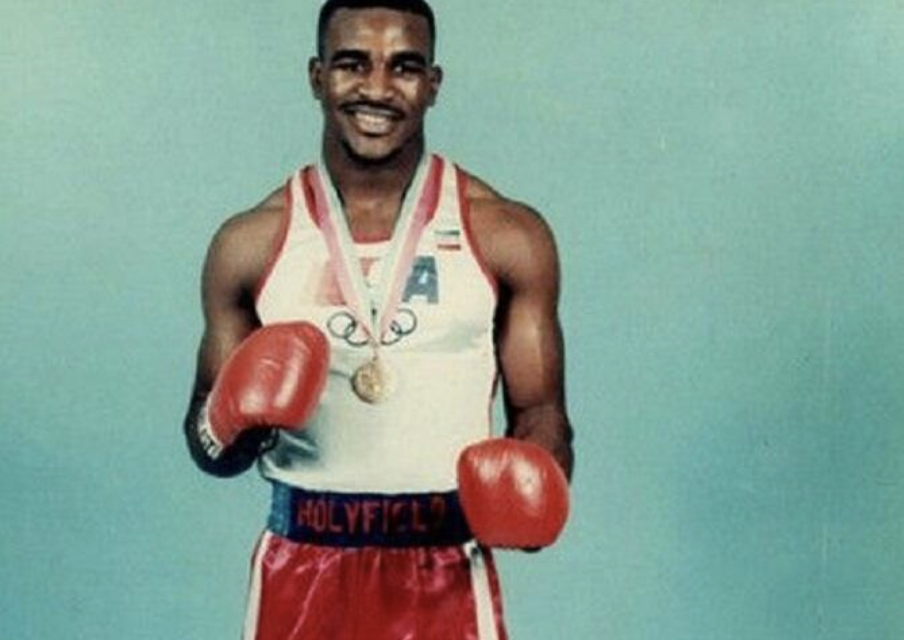
Because of his achievements, boxer Evander Holyfield is routinely ranked alongside Hank Aaron, Dominique Wilkins, and Chipper Jones when Atlantans discuss the city’s Mount Rushmore of sports legends.
Born in Atmore, Alabama, Holyfield moved to Atlanta as a child and was raised in the Bowen Homes projects.
1984 Olympic Bronze Medalist (Los Angeles Olympics)
Represented the United States and won bronze in the light-heavyweight division at just 21 years old—still the most decorated Olympic boxer ever to come out of Georgia.Undisputed Cruiserweight Champion (1986–1988)
Became the first boxer in history to unify the WBA, WBC, and IBF cruiserweight titles, finishing his cruiserweight career with a 15–0 record.Four-Time Heavyweight Champion of the World
- 1990: Knocked out Buster Douglas in 3 rounds to win the undisputed heavyweight title (WBA, WBC, IBF)
- 1993: Defeated Riddick Bowe in a historic upset to reclaim the WBA & IBF titles
- 1996: Stopped Mike Tyson in 11 rounds to win the WBA title (one of the biggest upsets in boxing history)
- 2000: Outpointed John Ruiz to win the vacant WBA heavyweight title (becoming the first boxer in history to win a heavyweight title four separate times)
Only Boxer to Win a Major Heavyweight Title in Four Different Decades
1980s (cruiserweight), 1990s, 2000s—he’s the only heavyweight champion with that distinction.Defeated an Insane Murderers’ Row of Heavyweight Legends
Beat George Foreman, Larry Holmes, Riddick Bowe (twice), Mike Tyson (twice), Michael Moorer, John Ruiz, and many others—arguably the toughest résumé of any heavyweight ever.1996 Upset Victory Over Mike Tyson
Widely regarded as one of the biggest shocks in sports history; Holyfield was a 25–1 underdog when he stopped the feared “Iron Mike” and brought massive pride to Atlanta.======================
Why These 5 Atlanta Athletes?
These athletes were chosen for their exceptional records, longevity with Atlanta teams, and transformative effects on their sports and the city. Hank Aaron’s home run chase and resilience broke barriers, defining Atlanta’s sports legacy. Chipper Jones and Tom Glavine were pillars of the Braves’ dynasty, delivering a championship and sustained excellence. Dominique Wilkins elevated basketball’s profile in Atlanta with flair and scoring. Michael Vick reshaped football, bringing a new level of excitement to the Falcons. Together, they blend statistical greatness, cultural impact, and deep ties to Atlanta, making them standouts in the city’s rich sports history.
This list is subjective—others like John Smoltz, or Matt Ryan could make strong cases based on different criteria (e.g., versatility, leadership). Who would you include or prioritize, and why? Let me know!
Final Word
Determining the “greatest” athletes in Atlanta’s sports history involves considering their statistical achievements, impact on their respective sports, contributions to Atlanta’s sports culture, and legacy. The following list highlights five individuals often regarded as among the best, based on their records, influence, and recognition within Atlanta’s sports landscape.
When it comes to sports and exercise, you should always make time. That’s why AtlantaFi.com wants to help you with your journey. Check out how to make a home gym for cheap and even lose pounds in a hurry.
Read More on Atlantafi.com’s Sports Page:
-
Delta’s newest offering — Delta Comfort Basic — promises more leg room while keeping airfare prices at a minimum.
As a frequent flier with Delta, I’ve been testing out my various flights to write about them to see which experiences resonate with me and readers.
Enter Delta Comfort Basic, the airline’s newest fare option that promises more space in the skies without the premium price tag. Launched in late November 2025, this stripped-down version of Delta’s popular Comfort+ seating is already sparking buzz among ATL travelers.
But with added restrictions, is it truly a game-changer or just another layer of airline complexity?
What Is Delta Comfort Basic?
Delta Comfort Basic is the entry-level tier in the airline’s revamped Comfort lineup, designed to let budget-conscious passengers snag extra legroom seats at a discount.
It’s not available on award tickets yet, only paid fares, and Delta’s testing it in “very select” domestic markets to gauge demand before a broader rollout.
Available for booking since November 6 on select domestic routes for travel starting November 19, it’s currently limited to a handful of markets — though Delta hints at expansion soon.
Delta Comfort Basic, which fits into the existing Delta Comfort product line as its lowest-priced, most restricted tier. It is an unbundled extra-legroom economy fare that provides the onboard amenities of the standard Comfort product with the limitations of a “Basic Economy” fare.
The Delta Comfort product line now has three tiers:
- Basic: The lowest cost option, offering extra legroom, Zone 3 boarding, complimentary alcohol, and dedicated overhead bin space, but seats are assigned after check-in, and fares are not eligible for upgrades or free changes.
- Classic (formerly the standard Comfort+): Offers all the perks of Basic, plus the ability to choose your seat in advance, greater flexibility (e.g., free changes/cancellations), and the ability to earn more miles.
- Extra: The highest tier within the Comfort line, offering the most flexibility, the highest mileage earn rate, and better boarding priority than Classic.
✈️ How it Ranks in the Overall Hierarchy
The Delta Comfort line (Basic, Classic, Extra) sits above the standard Delta Main cabin (formerly Main Cabin Economy) and below the premium cabins like Delta Premium Select (Premium Economy on international/some premium domestic routes) and Delta One (Business Class with lie-flat seats).
The full passenger experience hierarchy, from highest to lowest, is:
- Delta One (International/Premium Domestic Business Class, lie-flat seats)
- Delta First (Domestic First Class, wider recliner seats)
- Delta Premium Select (International Premium Economy, wider seats, more recline, footrests)
- Delta Comfort (Extra legroom economy, with Basic, Classic, and Extra fare options)
- Delta Main (Standard economy, with Basic, Classic, and Extra fare options)
The new “Comfort Basic” specifically provides a middle ground for travelers who prioritize the physical comfort of extra legroom and onboard perks (like free drinks) over the flexibility of choosing a specific seat or avoiding change fees.
Delta Comfort Basic: Is It Worth It?
Unlike the full Delta Comfort experience, which has long been a staple for those seeking a step up from standard economy, Comfort Basic trades some flexibility for affordability.
At its core, Comfort Basic keeps the essentials that make Delta Comfort appealing:
– Extra Legroom: 3-4 inches more than Main Cabin seats (typically 34 inches of pitch), perfect for taller travelers or those dreading a cramped cross-country hop.
– Dedicated Overhead Space: A reserved bin section to stash your carry-on without the mid-boarding scramble — a godsend on packed ATL departures.
– Zone 3 Boarding: Slip in right after First Class and Premium Select, beating the main cabin rush.
– Complimentary Beverages: Free beer, wine, spirits (on flights over 500 miles), and Starbucks coffee on routes longer than 251 miles, plus premium snacks on select flights over 900 miles.Priced dynamically, Comfort Basic often undercuts standard Main Cabin fares. For example, a one-way from Washington Dulles (DCA) to Miami (MIA) clocks in at around $104 — cheaper than the $109 Main Classic option — while offering superior onboard perks.
Verdict
Ultimately, Comfort Basic shines for price-sensitive ATL travelers who crave a taste of premium without the full commitment.
For shorter ATL routes (under two hours), the value dips — why pay for legroom you’ll barely use? But on longer jaunts, like to the West Coast, the dedicated space and early boarding shine, especially amid ATL’s notorious crowds.
If you’re a leisure flyer on a domestic route, value overhead security over seat choice, and don’t mind rolling the dice on assignment at check-in, it’s a solid pick — potentially saving you enough for an extra checked bag or a post-flight meal at Paschal’s
Final Word
For Atlanta-based travelers, this lands squarely in Delta’s wheelhouse. As the carrier’s largest hub with over 893 daily flights, ATL passengers — who make up 70% of the airport’s traffic — often face high demand and tight schedules.
Skip it if flexibility is key (e.g., business trips with potential changes) or if you’re chasing elite perks — opt for Comfort Classic instead. And for international escapes from ATL, wait for Delta’s teased expansions; this is domestic-only for now.
As Delta’s unbundling experiment unfolds, expect more tiers in Premium Select and beyond, potentially complicating bookings at our bustling hub.
Check Out Our Atlanta Travel Guide
-
In a city where Atlanta traffic is as predictable as a Falcons comeback, anything that streamlines life behind the wheel is a win.
Enter Georgia’s digital driver’s license: a secure, wallet-friendly alternative to fumbling for your plastic card during a traffic stop or at Hartsfield-Jackson’s TSA line.
Launched in 2023 for Apple users and expanded under House Bill 296 this past July, the Peach State’s mobile ID program now lets nearly 500,000 residents — about one in 20 Georgians — tap their phone to prove they’re legal to drive.
Electronic Georgia Driver’s License: How To Go Digital
But here’s the catch: As of now, it’s not a full replacement for your physical license. Georgia law still requires you to carry the real deal when you’re on the road.
“The digital version is optional and free, but think of it as a high-tech sidekick, not a substitute,” says a spokesperson for the Georgia Department of Driver Services (DDS).
That could change as more law enforcement agencies equip with readers, but for now, keep that laminated card handy.
Ready to join the digital revolution? Whether you’re zipping down I-85 or just grabbing groceries on Peachtree Street, here’s your step-by-step guide to getting set up. The process takes about 10-15 minutes, plus a quick DDS verification.
Step 1: Check If You’re Eligible
- You need a valid Georgia driver’s license or state ID that’s not expired or suspended. If yours is due for renewal, head to a DDS Customer Service Center first (skip the line with an online appointment at dds.georgia.gov).
- For iPhone users: iPhone 8 or later running iOS 15.4 or newer. Apple Watch Series 4 or later works too, if you want to sync it.
- For Android users: Google Wallet support rolled out in late 2024, but you’ll need a compatible device (Pixel 6+ or Samsung Galaxy S21+ recommended) with the latest OS. Scan your physical card via the Wallet app, just like Apple.
Pro tip for Atlanta newbies: If you’re a recent transplant, ensure your license is Georgia-issued. Out-of-staters can apply for a Peach Pass equivalent at any DDS office.
Step 2: Download and Set Up Your Wallet App
- Apple users: Open the Wallet app (pre-installed on iOS). Tap the “+” in the top right, select “Driver’s License or State ID,” and choose Georgia.
- Android users: Open Google Wallet, tap “Add to Wallet,” select “ID card,” and pick Georgia from the state list.
Both platforms guide you through a quick privacy rundown — your data stays encrypted on your device, and you control what info gets shared.
Step 3: Scan and Verify Your Identity
- Position your phone’s camera over the front and back of your physical Georgia license. The app auto-captures it — no blurry selfies allowed.
- Complete a facial recognition or fingerprint scan (Face ID/Touch ID on Apple; fingerprint/PIN on Android) to confirm you’re the real owner. This step uses your phone’s secure enclave for extra peace of mind.
- Hit submit. The DDS reviews your request, usually within minutes to a few hours. You’ll get a push notification when it’s approved.
No documents beyond your physical card? Nope — the scan handles it all. And it’s free; no hidden fees from DDS.
Step 4: Use It Like a Pro
Once added, your digital ID lives in your wallet app, ready to share via NFC tap or QR code. At ATL airport, breeze through TSA by holding your phone to the reader — no handing over your device. Pharmacies like CVS on Ponce de Leon have started accepting it for age checks, and some bars in Midtown are testing it too.
For traffic stops? Starting this summer, equipped Georgia State Patrol cruisers can verify it on-site. But if the officer’s gear isn’t updated, flash the physical one to avoid a headache. “We’re rolling out readers statewide, but rural spots might lag,” notes DDS.
Why Bother? The Perks for Peach State Drivers
- Security boost: Biometric locks mean no one swipes your ID from a lost wallet.
- Convenience: Forgot your license en route to Grant Park? Your phone’s got you.
- Eco-friendly: Less plastic in landfills — a small win for our humid Atlanta summers.
A Few Caveats from the DDS
- It won’t work offline forever; your phone needs a signal for full verification.
- Minors under 18? Not yet — stick to physical for now.
- Lost your phone? Report it to DDS immediately via their app or hotline (678-413-8400) to remotely disable the digital ID.
As Atlanta’s tech scene booms — think Delta’s digital boarding passes and MARTA’s app payments — the digital license fits right in.
Governor Kemp hailed it as a “business-friendly innovation” back in 2023, and with adoption surging, expect more spots to tap in soon.
Head to dds.georgia.gov/digital for the full FAQ, or drop by a local DDS office (like the one off Jimmy Carter Boulevard) for hands-on help. Got questions? Hit us up in the comments — safe travels, ATL!
More From AtlantaFi.com:
-
In the heart of metro Atlanta’s growing demand for transformative off-site experiences, Paradise Park Atlanta has officially opened its exclusive 8-acre riverfront estate.
The facility, just 25 minutes from downtown Atlanta and Hartsfield-Jackson Atlanta International Airport, aims to be the region’s go-to destination for high-impact executive retreats, team-building gatherings, and private leadership events.
Luxury Osasis Now Welcomes Corporate Groups in Atlanta
Set along a peaceful riverfront with lush gardens, modern wellness amenities, and flexible indoor-outdoor spaces, the venue combines productivity-focused environments with restorative elements designed to foster clarity, creativity, and team cohesion.
“Atlanta is a powerhouse for Fortune 500 companies, tech innovators, and diverse industries — yet leaders here often struggle to find nearby spaces that truly allow teams to unplug, recharge, and perform at their best,” said Savauna Sage, founder of Paradise Park Atlanta and a noted (W)holistic Living Specialist. “Paradise Park blends modern hospitality, nature, and healthy living in a way that supports focus and well-being, all without leaving the metro area.”
Conveniently located southwest of the city with easy access via I-20, Paradise Park Atlanta offers Atlanta-based companies and Georgia’s thriving business community a serene, nature-immersed alternative to traditional hotel conference centers.
The retreat offers customizable programs tailored for Atlanta’s corporate and association groups, including:
- Day-use meetings and workshops
- Overnight leadership intensives
- Multi-day team resets with guided wellness activities
With Atlanta selected as a host city for the 2026 FIFA World Cup, Paradise Park Atlanta also provides a private, tranquil lodging option for visiting executives, sponsors, and delegations seeking an escape from downtown crowds while staying within easy reach of Mercedes-Benz Stadium.
In 2026, the venue will host programs for the Black Montessori Education Fund, including educator training and retreats that align with Georgia’s focus on innovative education and community leadership development.
Limited exclusive-use bookings are available. Atlanta-area organizations are encouraged to reserve early for 2026 corporate off-sites and World Cup-related stays.
Visit www.paradiseislife.biz to submit an inquiry, schedule a complimentary retreat consultation, or arrange a private site tour.
Final Word
Atlanta has a lot of inspirational people and AtlantaFi.com is going to introduce you to many of them as well as cool places to go, great restaurants and other ATL happenings.
Got an event or know of something opening in and around Atlanta? Holla: CJ@AtlantaFi.com. See what’s poppin’ in the ATL! Subscribe to our news alerts here, follow us on Twitter and like us on Facebook.
-
Erykah Badu and André 3000 (born André Benjamin) share a storied history that blends romance, artistry, co-parenting, an enduring friendship, and Atlanta, Georgia.
Their connection, which began in the mid-1990s amid rising fame in hip-hop and neo-soul, produced not just a child but also cultural touchstones like OutKast’s “Ms. Jackson.“
Despite a breakup over two decades ago, they’ve maintained a close bond, often describing each other as best friends. Below is a chronological breakdown based on public accounts and interviews.
Early Days and Romance (1996–1999)
- How They Met: The two crossed paths in the Atlanta music scene during the recording of OutKast’s albums ATLiens (1996) and Aquemini (1998). Badu, then an emerging neo-soul star with her debut album Baduizm (1997), and André, half of the innovative rap duo OutKast, bonded over shared creative energies. Badu later recalled in a 2020 Rolling Stone interview that they were initially attracted but didn’t become instant friends—their rapport deepened over time through common interests like art and music.
- Dating Period: They were romantically involved from 1996 to 1999, a whirlwind era marked by professional breakthroughs. This overlapped with Badu’s pregnancy and the birth of their son, as well as André’s personal evolution, including his adoption of the “André 3000” moniker to signal a fresh start post-relationship.
Their Son, Seven Sirius Benjamin (Born 1997)
- Birth and Early Years: Seven was born on November 18, 1997, in Dallas, Texas, where Badu raised him initially. The timing was poetic—Badu’s live album Live was recorded while she was pregnant and released around his birth. Seven, now 27, has inherited his parents’ artistic flair: he’s played upright bass in school orchestras, piano, electric guitar, and has a strong singing voice with eclectic tastes mirroring André’s. Homeschooled early on by Badu for tailored learning, Seven excelled academically, gaining acceptance to four colleges in 2016 (leaning toward psychology, arts, and science).
- Notable Moments: In 2004, André and Seven accepted OutKast’s Grammy for Album of the Year (Speakerboxxx/The Love Below) together. Seven later moved to Atlanta as a teen to live with his father, which André credited in a 2014 New York Times interview with refocusing his life—he became hands-on with school runs, soccer, and wrestling. Seven also has two half-siblings from Badu’s later relationships: Puma (born 2004) and Mars (born 2009).
Breakup and “Ms. Jackson” (1999–2000)
- The Split: Their romance ended in 1999, just before OutKast’s pivotal album Stankonia dropped in 2000. The breakup inspired the album’s lead single “Ms. Jackson,” released October 24, 2000—a raw, apologetic track about navigating tension with an ex’s family after fathering a child. André has described it as a fictionalized take on real relational fallout, but fans long speculated it was a direct nod to Badu’s mother, Kolleen Gipson (the “Ms. Jackson” in question). It topped the Billboard Hot 100, won a Grammy, and became an anthem for baby-mama drama.
- Badu’s Recent Reflection: On a October 2025 episode of The New York Times’ “Popcast,” Badu addressed the lore with humor and skepticism. When host Joe Coscarelli called “Ms. Jackson” part of the “great hip-hop” made about her, she replied, “I don’t think ‘Ms. Jackson’ was actually about me. I don’t think so, but people say it.” She joked that her mom fully embraces the theory, complete with a bumper sticker and airbrushed T-shirt. André and Big Boi have historically downplayed direct ties to Badu, emphasizing its universal themes.
Post-Breakup Friendship and Collaborations (2000s–Present)
- Co-Parenting Dynamic: Despite the split, Badu and André have co-parented Seven with remarkable harmony and affection. In a 2014 Vibe interview, André shared they turn “baby mama/daddy” into inside jokes, with a teenage Seven once calling them “nuts.” Badu echoed this in 2020, naming André one of her “best friends on the planet”—they talk constantly, laugh together, and support each other’s art. She admires his nonjudgmental energy, which Seven has inherited.
- Collaborations and Public Moments:
- 2015: André guested on Badu’s mixtape track “Hello” from But You Caint Use My Phone.
- 2016: He surprised fans by joining her at her “Still Boomin'” birthday bash in Dallas.
- 2024: They reunited at the CFDA Fashion Awards on October 28, where André presented Badu with a fashion icon award in December— a nod to their shared style influence (he’s known for eccentric looks; she’s a boho queen).
- Current Status (as of 2025): No romantic reconciliation, but their platonic vibe remains strong. Recent clips from Badu’s appearances, like a September 2025 game where she playfully chose André over Black Thought for his “creativity,” highlight their easy chemistry. They prioritize Seven’s well-being, with Badu crediting their evolved friendship for making co-parenting “effortless.”
Final Word
Their story exemplifies how personal chapters can fuel timeless art while fostering lasting respect. If you’re curious about specific songs, interviews, or Seven’s latest endeavors, let me know!
-
When it comes to Georgia state parks, Stone Mountain stands tall as a beautiful landmark. Along with all that beauty is quite a bit of history, some of it pretty incredible.
Here are five fascinating and lesser-known facts or stories about Stone Mountain, Georgia, that highlight its complex history and unique characteristics.
1. The Confederate Carving’s Controversial Creation

The massive bas-relief carving on Stone Mountain, depicting Confederate leaders Jefferson Davis, Robert E. Lee, and Stonewall Jackson, is the largest of its kind in the world, spanning three acres.
Initiated in 1916 by the United Daughters of the Confederacy, the project faced decades of delays, funding issues, and sculptor disputes. Gutzon Borglum, who later carved Mount Rushmore, started the work but abandoned it after clashing with organizers.
The carving wasn’t completed until 1972, amid civil rights tensions, making it a lightning rod for debates about Confederate symbolism. Its prominence has sparked ongoing calls for removal or reinterpretation, with some suggesting adding figures like Martin Luther King Jr. to recontextualize the site.
2. Birthplace of the Second Ku Klux Klan

In 1915, Stone Mountain was the site of the infamous revival of the Ku Klux Klan. William J. Simmons, inspired by the film Birth of a Nation, organized a cross-burning ceremony atop the mountain on Thanksgiving night, marking the rebirth of the KKK.
This event cemented Stone Mountain’s association with white supremacist history, as the group later held meetings and rituals there.
The mountain’s granite was even quarried for the steps of the U.S. Capitol, creating an ironic contrast between its natural beauty and its darker historical ties.
3. Stone Mountain Is a Geological Marvel

Stone Mountain is a geological anomaly known as a monadnock, a massive granite dome rising 825 feet above the surrounding area and covering 583 acres.
Formed 300 million years ago from magma cooling beneath the Earth’s surface, it’s one of the largest exposed granite formations in the world.
Its unique quartz monzonite composition has made it a quarry source for centuries, and its durability is why it was chosen for the Confederate carving.
The mountain’s summit also features rare plant species, like the endemic Stone Mountain daisy, thriving in its harsh, rocky environment.
4. Theme Park with a Complicated Past

Stone Mountain Park, now a popular family destination with attractions like a laser show and skyride, was explicitly developed to celebrate Confederate heritage. In the 1950s, the state of Georgia purchased the mountain, partly to preserve the carving project as a “shrine to the South.”
Over time, the park evolved to include more inclusive attractions, but its Confederate-themed elements, like the carving and street names honoring Confederate figures, remain contentious.
In 2021, the park’s leadership began re-evaluating its historical displays, removing some Confederate flags and adding educational exhibits to address the site’s complex legacy.
5. The Lost Village of Stone Mountain

Before the mountain became a tourist destination, it was home to a small, self-sufficient community in the 19th century.
The village of Stone Mountain, located at the base, thrived on granite quarrying and farming. However, during the Civil War, Union General William T. Sherman’s troops burned parts of the village during their March to the Sea in 1864, targeting its railroad and industrial resources.
Remnants of this community, including old quarry sites and historical markers, are still visible in the park, offering a glimpse into a forgotten chapter of the area’s history.
These stories reflect Stone Mountain’s layered past, from its geological uniqueness to its role as a flashpoint in cultural and historical debates.
Final Word
There continues to be ongoing local sentiment about the mountain’s symbolism, with some calling for its preservation as history and others advocating for change to reflect modern values.
How do you feel about Stone Mountain? Let me know in the comments.
Looking for some fun in Georgia? First, to find all the cool things happening in Atlanta this weekend, all you have to do is take a look at downtown area. That’s where some of the best restaurants are as well as where the visitors, namely tourists, are. Downtown Atlanta or Midtown Atlanta often has something cool going on! Check out these events in Atlanta today and this week and this weekend:
Here are more articles from AtlantaFi.com:
-
It’s been said that Atlanta is not a real place. One reason is due to the many true-or-not-true claims associated with the city.
Is Buckhead really named after a buck’s head? Who knows. Some things about Atlanta’s history are known facts while others are kind of dubious.
6 Dubious Claims About Atlanta: Are They True Or Not?
Dubious facts are those that seem questionable, lack clear evidence, or are often repeated without verification.
Here are some dubious facts or claims about Atlanta, Georgia, that have circulated but are either unproven, exaggerated, or based on shaky grounds, along with a critical look at each:
1. Atlanta Has 71 Streets Named Peachtree
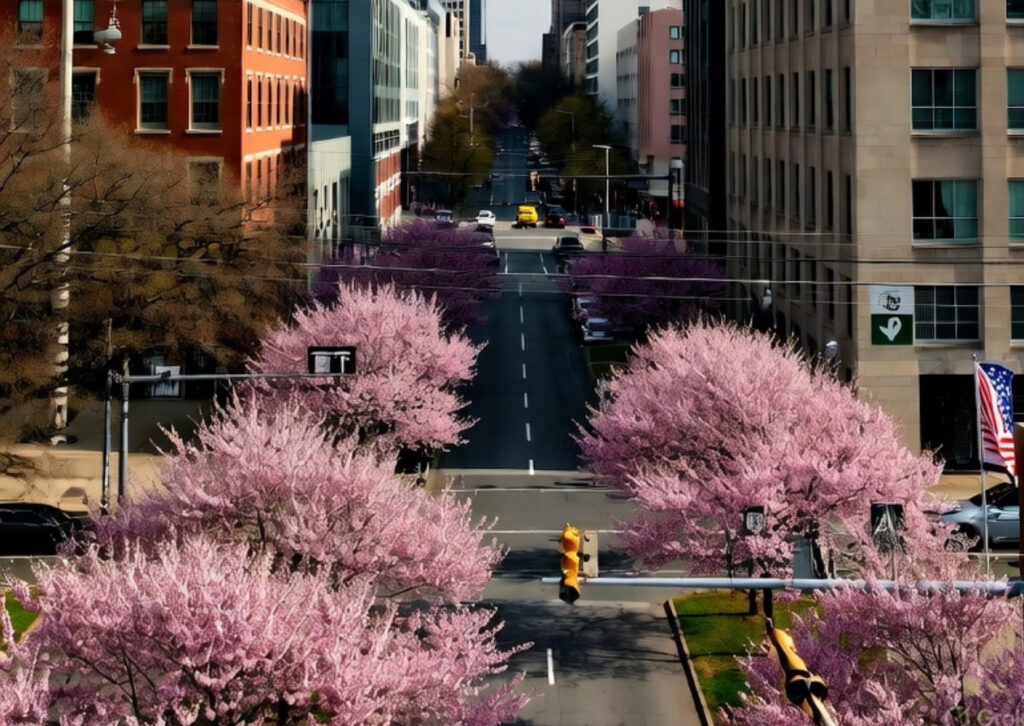
Claim: It’s often said that Atlanta has over 70 streets with “Peachtree” in their name, with numbers like 71 or 55 frequently cited.
Why It’s Dubious: While Atlanta does have many streets with “Peachtree” in their names (e.g., Peachtree Street, Peachtree Road, Peachtree Lane), the exact count varies across sources, with no definitive list verified by city records.Some sources, like Discover Atlanta, claim around 70, while others, like Mental Floss, say 55. The lack of a precise, authoritative count suggests exaggeration or sloppy reporting.
Additionally, the idea that these streets are all named after peach trees is dubious—historians argue the name likely comes from “Standing Pitch Tree,” a Native American term for pine trees, as peach trees aren’t native to the area.
Reality: There are many Peachtree-named streets, but the exact number is unconfirmed, and the peach tree origin story is likely a myth.2. There’s a Burial Plot Between Runways at Hartsfield-Jackson Airport
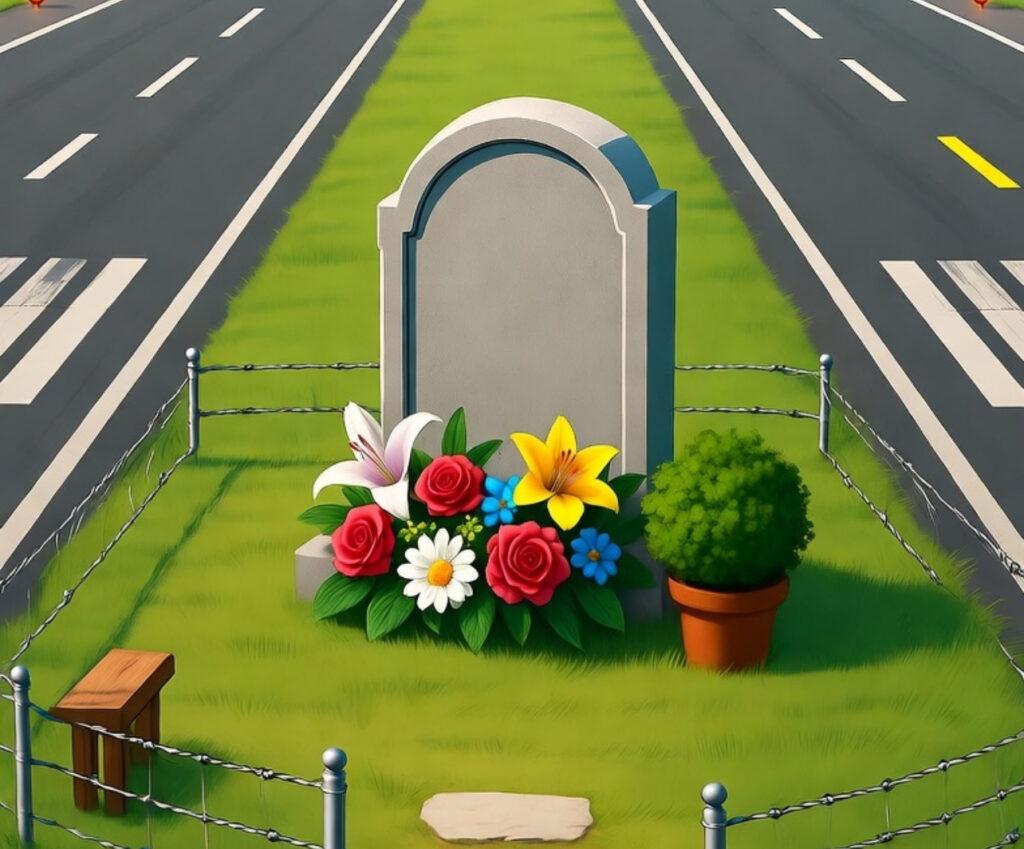
Claim: A small cemetery, sometimes called Flat Rock Cemetery, exists between two runways at Hartsfield-Jackson Atlanta International Airport.
Why It’s Dubious: This claim, mentioned in Reddit discussions, lacks concrete documentation from official airport or city records.While it’s plausible that old burial sites could exist near the airport due to its large footprint and historical land use, no verified evidence confirms a cemetery between runways.
The story may stem from confusion with nearby historical cemeteries or urban legends about displaced graves during airport expansion. Without primary sources, it remains speculative.
Reality: No confirmed cemetery exists between the runways, though the airport’s vast area may include undocumented historical sites.3. It’s Illegal to Tie a Giraffe to a Telephone Pole in Atlanta

Claim: Atlanta has an outdated law banning tying a giraffe to a telephone pole or street lamp.
Why It’s Dubious: This is often cited as a quirky, antiquated law, but there’s no evidence in Atlanta’s municipal code to support it.Such claims typically arise from lists of “weird laws” that circulate online, often without citing original ordinances.
It’s possible this stems from misinterpretations of old animal control laws, but the specificity of “giraffe” suggests it’s more likely a fabricated or exaggerated tale.
Reality: No such law is documented in Atlanta’s legal code, making it a likely urban legend.4. It’s Illegal to Keep a Donkey in Your Bathtub in Atlanta

Claim: An old Atlanta law supposedly prohibits keeping a donkey in a bathtub.
Why It’s Dubious: Like the giraffe law, this appears in lists of strange laws but lacks any verifiable source in Atlanta’s ordinances.These stories often emerge from early 20th-century regulations taken out of context or entirely made up for entertainment. Without a specific citation, it’s dubious at best.
Reality: No evidence supports this as an actual law, likely another myth from “weird laws” collections.5. Atlanta Was Named After the Governor’s Daughter’s Middle Name, Atalanta

Claim: Atlanta’s name comes from Marthasville, which was renamed after Governor Wilson Lumpkin’s daughter’s middle name, Atalanta.
Why It’s Dubious: This story competes with another claim that Atlanta is a shortened form of “Atlantica-Pacifica,” tied to the Western and Atlantic Railroad.Both origins are cited in various sources, but neither is definitively proven.
The Atalanta story relies on anecdotal history, and no primary documents, like city charters, confirm it. The railroad explanation is more widely accepted, as Atlanta was founded as a rail terminus, but the lack of consensus keeps this claim questionable.
Reality: The railroad origin is more likely, but the Atalanta story persists without solid evidence.6. Street Names Changed at Ponce de Leon to Separate White and Black Neighborhoods
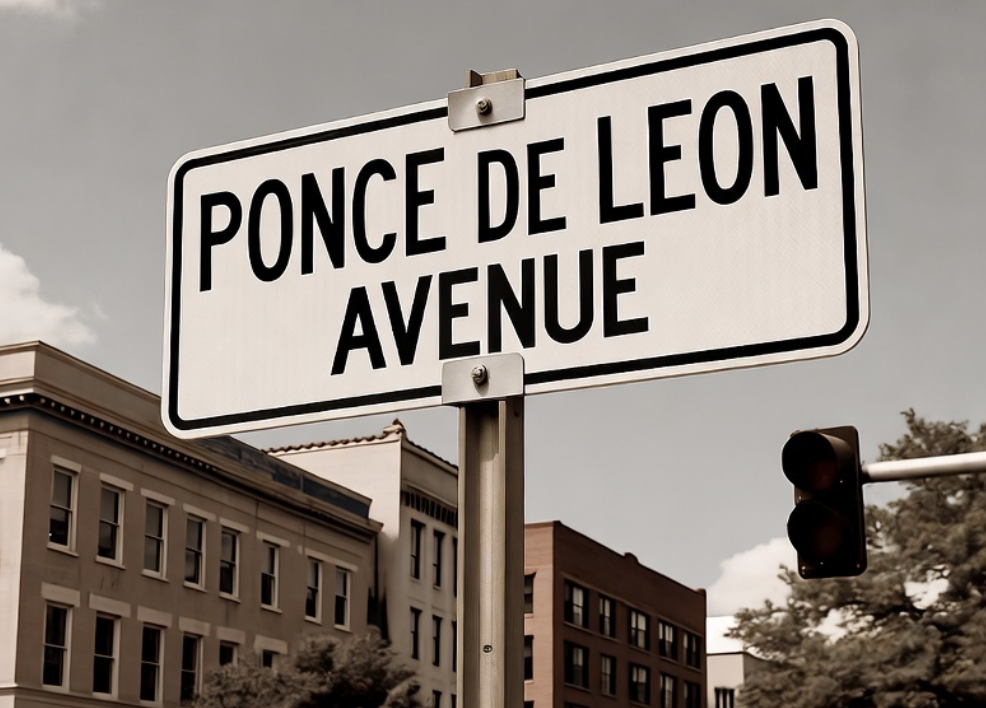
Claim: Streets like Briarcliff and Moreland change names at Ponce de Leon Avenue because white residents didn’t want to share street names with Black neighborhoods to the south.
Why It’s Dubious: This claim, mentioned in Atlanta Magazine, lacks primary sources like city council records or firsthand accounts to confirm racial intent.Street name changes in Atlanta often result from historical quirks, like separate towns merging or inconsistent naming conventions.
While segregation was rampant historically, attributing specific street name changes to it without evidence is speculative. It’s plausible but unproven.
Reality: Street name changes are common in Atlanta, but no hard evidence ties this specific practice to racial segregation.These claims float around as “fun facts” but crumble under scrutiny due to lack of primary sources, reliance on anecdotal reports, or outright fabrication.
Final Word
Always cross-check such tales with official records or reputable histories to separate fact from folklore. If you want me to dig deeper into any of these or search for more dubious Atlanta claims, let me know!
Atlanta has a lot of cool things to do and places to eat, including some of the top soul food joints and remarkable Thai food spots. Explore the city.
Here are more articles from AtlantaFi.com you might like:
-
As Metro Atlanta continues its rapid growth, painting a picture of economic vitality with new high-rises dotting the skyline and tech jobs booming in Midtown, a quieter crisis simmers beneath the surface: food insecurity.
New analysis of federal data shows that in the region’s five core counties—Fulton, DeKalb, Gwinnett, Cobb, and Clayton—tens of thousands of residents rely on the Supplemental Nutrition Assistance Program (SNAP), formerly known as food stamps, to put meals on the table.
How Many Metro Atlanta Residents May Lose SNAP Benefits if Shutdown Persists?
Approximately 700,000 metro Atlanta residents could face the loss of their SNAP benefits if the federal government shutdown persists beyond October 2025.
This estimate is based on the region’s 29-county population of roughly 6.35 million and a SNAP participation rate of 11% in Georgia’s metro areas, which aligns with recent state data showing lower urban reliance compared to rural counties (17%).
For context, Georgia’s statewide total stands at about 1.4 million recipients, or 12.6% of the population, with metro Atlanta accounting for over half due to its size.
These counties, home to more than 3.9 million people, represent the beating heart of the Atlanta metro area, yet SNAP participation rates vary starkly, from under 8% in affluent Cobb County to a staggering 24% in Clayton County.
The figures, drawn from the U.S. Census Bureau’s 2022 Small Area Income and Poverty Estimates (the most recent comprehensive county-level data available), underscore persistent inequities in access to nutritious food.
In Fulton County, which encompasses most of the city of Atlanta, 160,940 residents—about 14.8% of the population—received SNAP benefits that year.
DeKalb County, just east of the city, saw even higher usage at 16.4%, with 127,335 participants amid a population of 775,022.
Gwinnett County’s rate stood at 9.6% (94,116 recipients out of 983,702 residents), reflecting its diverse immigrant communities and suburban sprawl.
Further north, Cobb County’s lower 8.0% participation (62,007 out of 779,249) highlights relative economic stability in areas like Marietta and Smyrna.
But in Clayton County, south of the city, the story is dire: 24.3% of its 302,285 residents—73,512 people—depended on SNAP, a rate more than double the state average of 12.6% for fiscal year 2024.
How Many Metro Atlanta Residents Receive SNAP Benefits?
Across these five counties, an estimated 518,000 residents turned to the program in 2022, a lifeline amid rising grocery prices and stagnant wages.
County 2022 Population SNAP Recipients (2022) Participation Rate Fulton 1,087,170 160,940 14.8% DeKalb 775,022 127,335 16.4% Gwinnett 983,702 94,116 9.6% Cobb 779,249 62,007 8.0% Clayton 302,285 73,512 24.3% These numbers — compiled from the U.S. Census Bureau via Federal Reserve Bank of St. Louis (FRED — aren’t just statistics, they’re families skipping meals, children facing hunger in school cafeterias, and seniors choosing between medicine and groceries.
Georgia’s overall food insecurity rate hovers at 14.9%, affecting 1 in 7 residents, but in the Atlanta Community Food Bank’s 29-county service area, it’s slightly lower at 12.8%—or 1 in 8 people.
Yet recent reports paint a worsening picture. Feeding America’s 2025 “Map the Meal Gap” study reveals food insecurity rising statewide, with 1 in 5 children and 1 in 10 seniors now at risk.
The Atlanta Food Bank has seen a 60% surge in demand for emergency meals over the past three years, driven by inflation, housing costs, and the end of pandemic-era expansions to SNAP and other aid programs.
Looking ahead, experts project a troubling trajectory for the Atlanta area. If current trends hold—marked by persistent inflation in food prices (up 25% since 2019) and uneven job recovery—food insecurity could climb to 15-17% across the metro region by 2027.
In high-participation counties like Clayton and DeKalb, rates might approach 25-30%, exacerbating health disparities such as higher rates of diabetes and obesity already prevalent in underserved Black and Brown communities.
When Will SNAP Benefits Stop Nationwide?
The ongoing federal government shutdown, now in its second week, threatens to halt SNAP benefit issuance starting November 1, potentially leaving 1.4 million Georgians—including 640,000 children—without support for weeks.
This could spike emergency food pantry visits by another 20-30%, straining local resources.But amid the challenges, solutions are within reach. Local leaders and organizations are rallying with a mix of immediate relief and long-term strategies.
Expanding access to SNAP through streamlined enrollment and outreach—particularly in linguistically diverse Gwinnett—could reach thousands more eligible families, as only about 80% of those who qualify currently participate statewide.
Community-driven initiatives, like the Atlanta Community Food Bank’s partnerships with urban farms and mobile pantries, have already distributed millions of meals, but scaling these with corporate donations and volunteer drives is key.
Atlanta’s recent $2.5 million investment in fresh food access projects, including new markets in food deserts, shows promise for sustainable change.
Programs like Wholesome Wave’s incentives for buying Georgia-grown produce at farmers’ markets empower low-income shoppers to afford healthier options, while food rescue groups such as Second Helpings Atlanta and Rescuing Leftover Cuisine redistribute surplus from restaurants and grocers, cutting waste and hunger in one stroke.
On the policy front, advocates call for a living wage ordinance in Atlanta and state-level expansions to the Emergency Food Assistance Program (TEFAP), which supplements diets for the elderly and low-income families.
“SNAP is a critical lifeline for 1.4 million Georgians, including more than 640,000 children,” said Ife Finch Floyd, director of economic justice at the Georgia Budget and Policy Institute.”
As the shutdown drags on and winter approaches, Metro Atlanta’s leaders must act swiftly. Residents can support by volunteering with Hands On Atlanta’s “Hands on Hunger” program or donating to local pantries.
Final Word
For those in need, SNAP applications remain open via Georgia’s Division of Family & Children Services at dfcs.georgia.gov/snap.
In a city known for its resilience, turning the tide on hunger starts with collective will. The data demands it; our neighbors deserve it. Tips? Contact us at tjohnson@atlantafi.com.
More groceries stores are pivoting to curbside pickup, but many still haven’t made the switch (Looking at you, Trader Joe’s). AtlantaFi.com will keep you up to date on other stores at offer curbside pickup and more ways to keep you safe.
Want to save money on groceries and cut your bill in half? Of course, you do.


